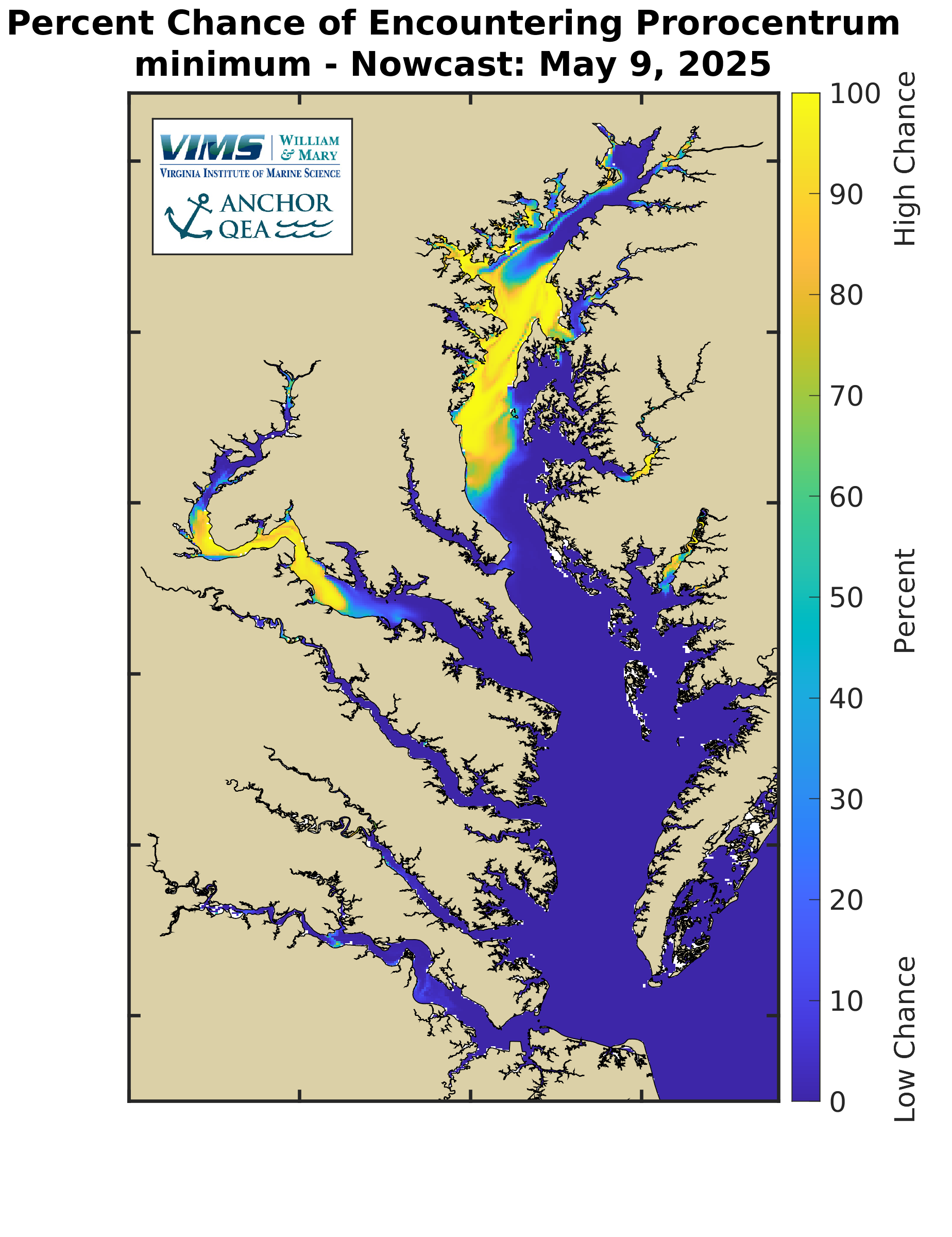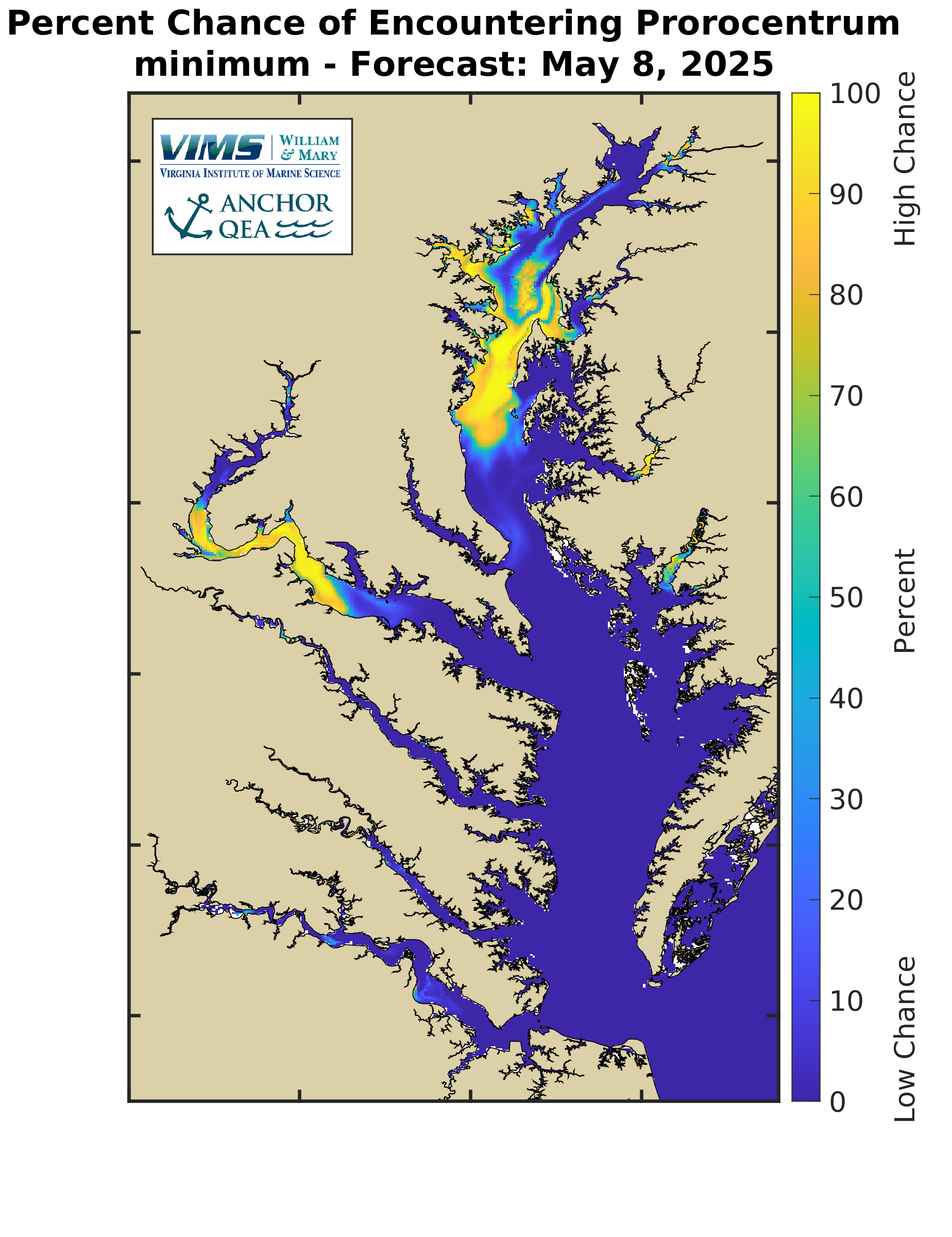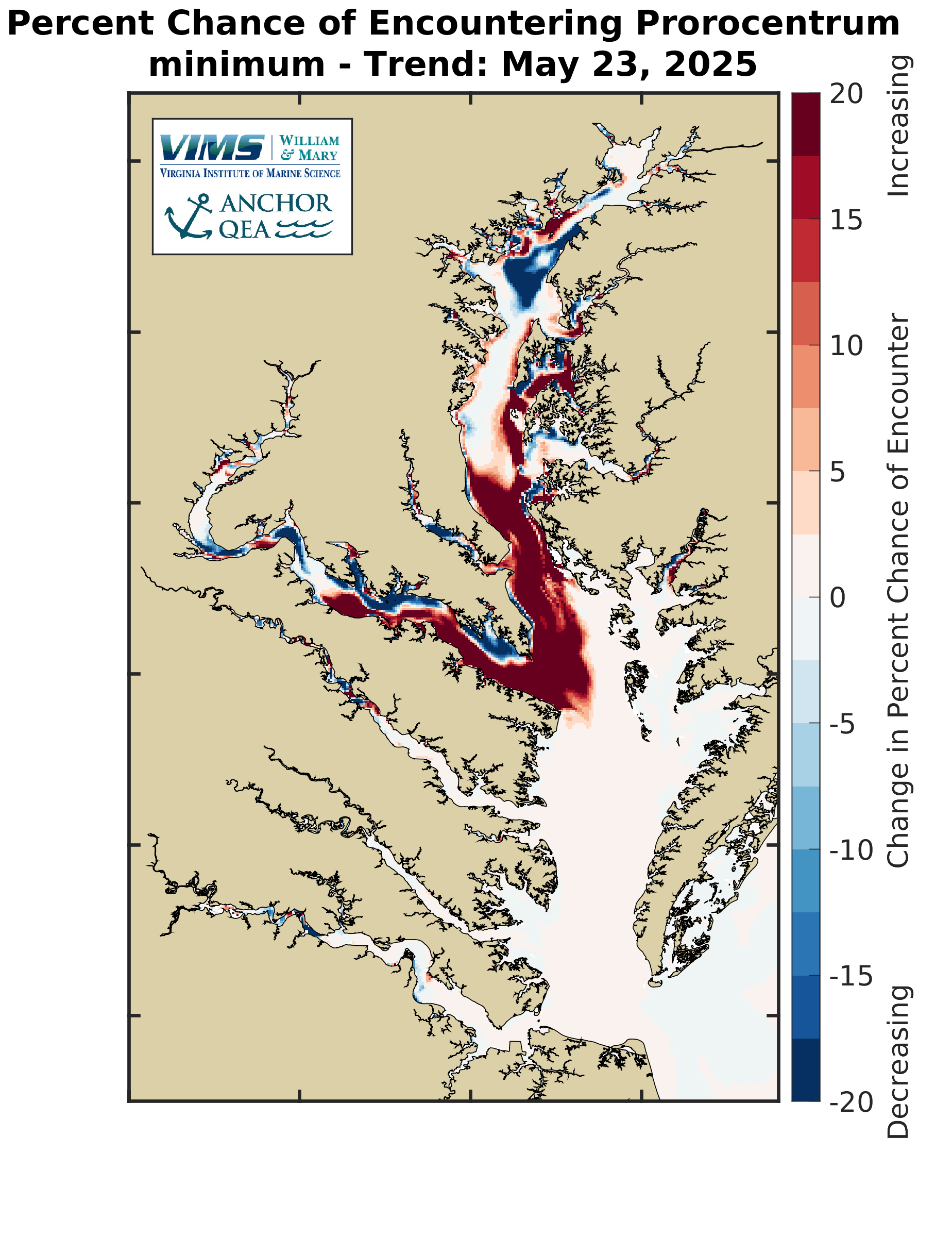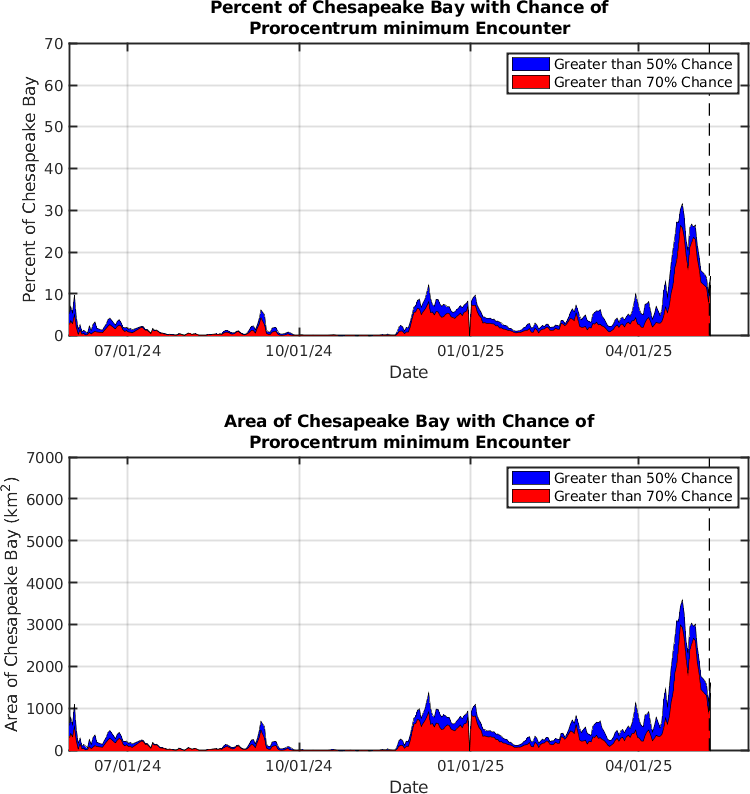Harmful Algal Blooms (EXPERIMENTAL)
Summary
This DRAFT and EXPERIMENTAL webpage is focused on Harmful Algal Blooms (HABs) and is part of an ongoing multiple-year research project. This webpage will be periodically updated. Please use this version of the webpage and forecasts for informational purposes only.
Algal blooms, or "red tides," are caused by aggregations of tiny marine plants, some of which contain reddish pigment. Algae are normal components of all aquatic environments, but can produce what is known as a “harmful algal bloom” or “HAB” when they bloom in significant numbers, lead to oxygen depletion, or generate toxic byproducts. HABs can harm marine organisms and some also impact human health. HABs occur in Chesapeake Bay and can negatively impact the environment and human health.
Prorocentrum minimumProrocentrum minimum (P. minimum) can produce harmful algal blooms that have detrimental effects on marine life in the Chesapeake Bay. The probability of encountering P. minimum is estimated using a Generalized Additive Model (GAM) that was developed using data on P. minimum occurrence throughout the Bay and tributaries. GAMs are a type of machine learning where computers use an iterative approach to develop the best model, in this case, for predicting the probability of occurrence of P minimum. The GAM used here relates salinity, water temperature, water pH, and the total organic nitrogen in the water to the percent probability of encountering P. minimum.
Note: P. minimum is most likely to be encountered in the spring. The forecast probability of encounter will increase again in the spring. |




